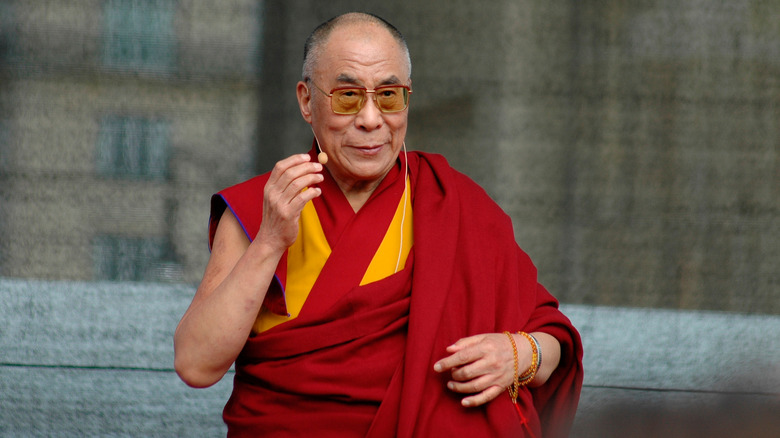
“It is a moment of great pride that after a lot of hard work, the first batch of Tibetan Buddhist nuns received their Geshema degrees. His Holiness further applauded the first batch of Tibetan Buddhist nuns who attained the Geshema Degree, comparable to a PHD in Buddhist philosophy, in December last year. However, His Holiness admitted that due to societal influences, there are instances where women are sometimes considered inferior or weaker in the community, which should not be the case.

Speaking about women in Tibetan culture, His Holiness the Dalai Lama said Tibetan culture, which is primarily based on Tibetan Buddhism, considers all sentient beings as equal including men and women. His Holiness blamed these misfortunes on the lack of compassionate leadership in the world and explained that more women in leadership positions could redress these misfortunes. His Holiness also expressed his sorrow at the prevalence of violence in the name of religion and widespread starvation caused by human greed and insensitivity in parts of the world. In his keynote address, His Holiness the Dalai Lama welcomed the celebration of 12 March as Tibetan women’s day and acknowledged women as innately more compassionate and empathetic. Sikyong Dr Lobsang Sangay, members of the Kashag, Speaker Khenpo Sonam Tenphel, members of the Tibetan Parliament and Chief Justice Commissioner Kargyu Dhondup also took part in the ceremony. The event was attended by Senator Lisa Singh from Australia, Senators Annick Billon, Andre Gattolin and Michel Raison from France and retired parliamentarian Consiglio Di Nino from Canada. In His Holiness, Raghu Rai has captured the journey of the Dalai Lama in India, presenting an intimate photographic portrayal of the life of one of the most popular twentieth-century spiritual leaders, the Dalai Lama.Sikyong Dr Lobsang Sangay speaking to the public on the 1st Tibetan Women’s day event on 12 March 2017. Photographing subjects from Indira Gandhi and Mother Teresa to the victims of Bhopal, he is one of the most prominent and well-known visual chroniclers of the country. Since 1960, he has resided in Dharamsala, aptly known as “Little Lhasa,” the seat of the Tibetan government-in-exile.Īward-wining photographer Raghu Rai has spent over four decades charting the changing face of India. In 1959, he was forced into exile in India after the Chinese military occupation of Tibet. Enhanced by historical commentary and archival photos of the Dalai Lama and Tibet, Rai’s work follows the spiritual leader’s journey from exile through his present worldwide influence in a stunning and intimate photo series.īorn to a peasant family in 1935, Lhamo Thondup was recognized at age two as the reincarnation of the Dalai Lama and became the temporal leader of Tibet at age fifteen. Now leading Tibetan Buddhists from afar, His Holiness is respected around the world as a pillar of peace and moral strength while he remains separated from his country. Since the fourteenth Dalai Lama’s forced exile from Tibet in 1959, Raghu Rai, one of the world’s most famous photographers, has documented his life in India. Rai presents an intimate photographic portrayal of the life of one of the most popular twentieth-century spiritual leaders.

In His Holiness, award-winning photographer Raghu Rai has captured the Dalai Lama’s journey in India since exile from Tibet in 1959.


 0 kommentar(er)
0 kommentar(er)
